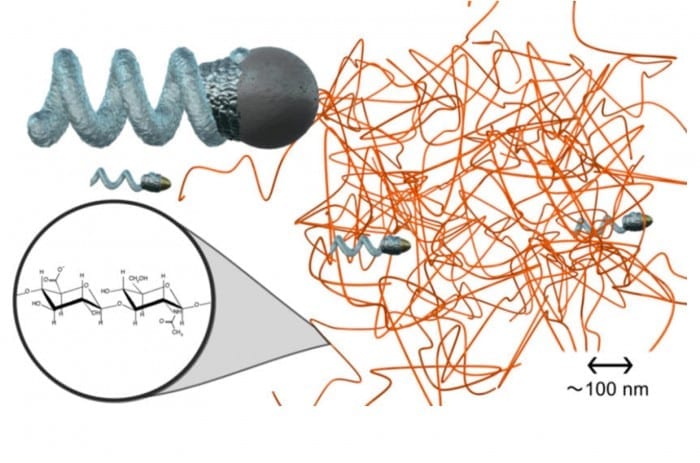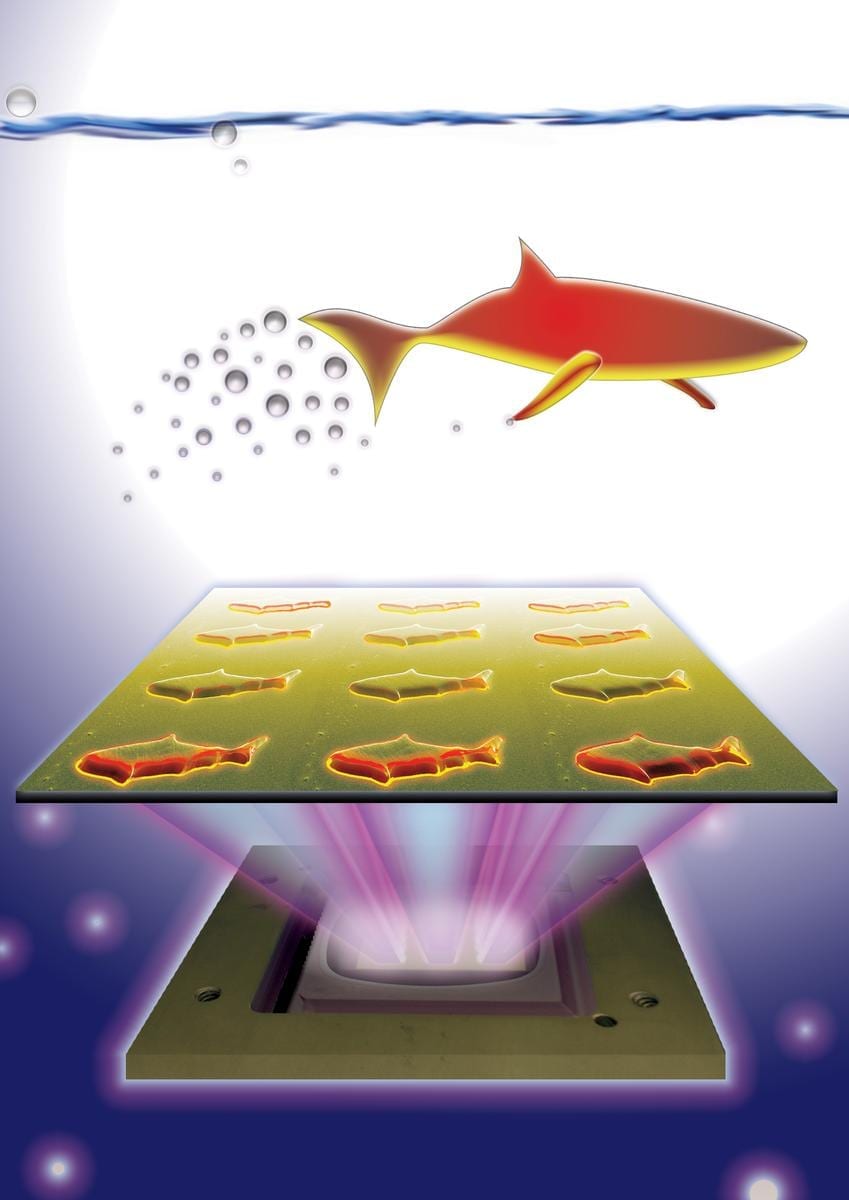
If you thought that the most impressive news in shrinking technology these days was smart watches, think again.
Scientists are quietly toiling in their laboratories to create robots that are only nanometers – billionths of a meter – in length, small enough to maneuver inside the human body and possibly inside human cells. The impact of these miraculous microscopic machines on medicine can only be imagined, but there is no doubt that it will be significant.
One of the first steps in creating these robots is figuring out how to make them move. In a paper published in the June 2014 issue of ACS Nano, an Israeli and German team announced that they had succeeded in creating a tiny screw-shaped propeller that can move in a gel-like fluid, mimicking the environment inside a living organism. The team is comprised of researchers from theTechnion-Israel Institute of Technology’s Russell Berrie Nanotechnology Institute, the Max Planck Institute for Intelligent Systems, and the Institute for Physical Chemistry at the University of Stuttgart, Germany.
The filament that makes up the propeller, made of silica and nickel, is only 70 nanometers in diameter; the entire propeller is 400 nanometers long. (A nanometer is one billionth of a meter.) “If you compare the diameter of the [nanopropellers] with a human blood cell, then the [propellers] are 100 times smaller,” said Peer Fischer, a member of the research team and head of the Micro, Nano, and Molecular Systems Lab at the Max Planck Institute for Intelligent Systems. They are so small, in fact, that their motion can be affected by the motion of nearby molecules (known as Brownian motion).
The team already knew that tiny propellers moved well through water, but to test if they could move through living organisms, they chose hyaluronan, a material that occurs throughout the human body, including the synovial fluids in joints and the vitreous humor in your eyeball. The hyaluronan gel contains a mesh of long proteins called polymers; the polymers are large enough to prevent micrometer-sized propellers from moving much at all. But the openings are large enough for nanometer-sized objects to pass through. The scientists were able to control the motion of the propellers using a relatively weak rotating magnetic field.
The findings were somewhat surprising.
Read more . . .
The Latest on: Microscopic machines
[google_news title=”” keyword=”Microscopic machines” num_posts=”10″ blurb_length=”0″ show_thumb=”left”]
via Google News
The Latest on: Microscopic machines
- Global Sleeve Wrapping Machine Market Set for Continued Growth, Reaching US$ 1.6 Billion by 2032on May 9, 2024 at 8:32 am
According to Flexible Packaging, the heat shrink sleeve format in North America is experiencing a seven percent growth rate, expanding into new categories such as health and beauty. Future Market ...
- BBC micro:bit – the next gen unveils nationwide playground survey to empower children’s digital and data collection skillson May 9, 2024 at 8:00 am
Utilising the free micro:bits, that were given away to more than 20,000 primary schools last autumn, pupils will learn new skills, get outdoors and engage in practical activities within their school p ...
- Green energy opportunities grow as Precision Micro expands its production facilityon May 9, 2024 at 5:37 am
Global chemical etching supplier Precision Micro has announced the delivery of a new etching and stripping machine at its Fort Dunlop site in Birmingham, U.K., finalizing its second new etch room.
- Built-in washing machine filters quick fix to microplastic problem, advocates sayon May 8, 2024 at 3:02 pm
The Micfofiber Filter Rebate Act provides a rebate for the cost of the microfiber washing machine filter or replacement filter. There are also after-market filters you can already purchase, as well as ...
- Boston Micro Fabrication Unveils Hybrid Resolution Micro 3D Printeron May 8, 2024 at 9:42 am
Boston Micro Fabrication introduced something quite unique: a hybrid resolution micro 3D printer. A new research paper explores the concept of 3D printing using UAVs. Creality announced another new 3D ...
- Why Arista Networks, Advanced Micro Devices, and Arm Holdings Fell in Aprilon May 6, 2024 at 7:00 am
It was a tough month for AI tech stocks as inflation fears were rekindled and a few bellwethers reported earnings that couldn't live up to expectations.
- fruit machineon May 5, 2024 at 5:00 pm
The handle is an upgrade to an earlier slot machine project that uses three 8×8 matrices and a custom driver board. When the spring-loaded handle is pulled, it strikes a micro switch to spins the ...
- Wall Street Lunch: Is This Market A Micro Machine?on April 29, 2024 at 10:10 am
The market may not be as tethered to the Fed as people think. The yen's freefall prompts intervention to support it. Apple gets an upgrade ahead of earnings.
- Market is a 'micro machine' ideal for stock picking - Morgan Stanleyon April 29, 2024 at 3:51 am
"Under the surface, this market is a micro machine." "This dispersion has practical implications. For active investors, an ideal stock-picking environment is one with enough dispersion to create ...
- Market is a 'micro machine' ideal for stock picking - Morgan Stanleyon April 29, 2024 at 2:52 am
While it may seem like central banks, geopolitics and other macro factors are driving market performance, Morgan Stanley says price action tells a different story. "For all the sound and fury coming ...
via Bing News










